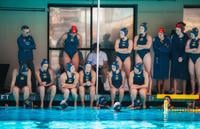Like any of us, when I read in an article published by California Watch about the sexist remarks an engineering student endured at our campus, I was appalled. Such remarks are totally at odds with Berkeley’s Principles of Community, and the College of Engineering has zero tolerance for such behavior. I was also saddened to realize that while we have come a long way in my 28-plus years on the engineering faculty, there is still work to be done. When I came to Berkeley, the College of Engineering was led by one of my heroes, Karl Pister. Karl worked tirelessly to broaden participation of women and underrepresented individuals at every level in the college — undergraduate, graduate and faculty. His arguments for doing so were compelling, presented with grace, authority and unwavering moral conviction. Every single dean since Karl has followed his lead. And like many of my colleagues, I have been anxiously watching our progress for decades, not just studying our statistics, but also observing how our students work together and accept their differences — gender, race, ethnicity, socioeconomic status, sexual orientation, age, religion and national origin. Our concern for civility and mutual respect is shared by the employers of our graduates; engineers usually work in teams, and teams can be successful only if all team members respect the value of individual perspectives as well as their technical abilities. So where does Berkeley Engineering stand in 2011? Women make up nearly a quarter of our undergraduate body — higher in some departments, such as bioengineering, and lower in others, such as the 15 percent in mechanical engineering cited in a Daily Cal blog post last week. While the blog post mentioned a national study citing that women are more likely to drop engineering as a career path than men, this doesn’t happen at Berkeley Engineering. Retention of women students from year to year is actually higher across each department than it is for men, and graduation rates are indistinguishable by gender. One thing that contributes to this outcome is the college’s strong student advising program, as cited in a Daily Cal column in September. Providing role models and mentoring in the administration, faculty, student and alumni community is also critical: Women hold two of five associate dean positions in the college and 29 faculty positions. Five of these women list chairing their departments among their accomplishments. Extraordinary women graduate students and postdocs provide more support, in classrooms and laboratories as GSIs, and in research laboratories as mentors. But the admirable retention and graduation rates of women at Berkeley Engineering are largely due to the students themselves, among the most capable and confident in the nation. As a testament to their ability, as well as the high esteem in which they are held by peers (men and women alike), women hold many leadership positions at the college. Sabina Del Rosso was elected president of the Engineering Student Council this year. Women lead 15 of our student societies. Sara LaVigna, president of the Society of Women Engineers, reports that her group is particularly active among chapters of the national professional organization, co-hosting a visit by Secretary of Homeland Security Janet Napolitano to Berkeley just last spring. What contributes to our ranking as one of the top three engineering schools in the nation is the interdisciplinary nature of our work. This relies on being able to work and communicate well with other people. So does success in the professional world. For this, studies show that women often come in with an advantage. For diversity across the board, we hold high the values of inclusiveness and cultural and interpersonal sensitivity as we strive to create a supportive learning environment for all of our students. To reinforce these values and goals, the college is taking several steps: Dean Shankar Sastry is talking with each department chair about the learning environment within departments and how to promote inclusivity. Meetings between departments and student representatives will enable students to air their voices on the issue. Under consideration are future focus groups and surveys to assess the climate. The college’s Broadening Participation Committee, with faculty and student representatives (including from SWE and the Hispanic Engineering Society), will meet Wednesday, Nov. 9 to discuss these issues and recommend immediate steps and long-term strategies. Finally, we welcome your thoughts and suggestions for upholding a supportive and enriching learning environment for all our students.
A look at the women of Berkeley Engineering
- By Fiona Doyle
- Comments
comments powered by Disqus











